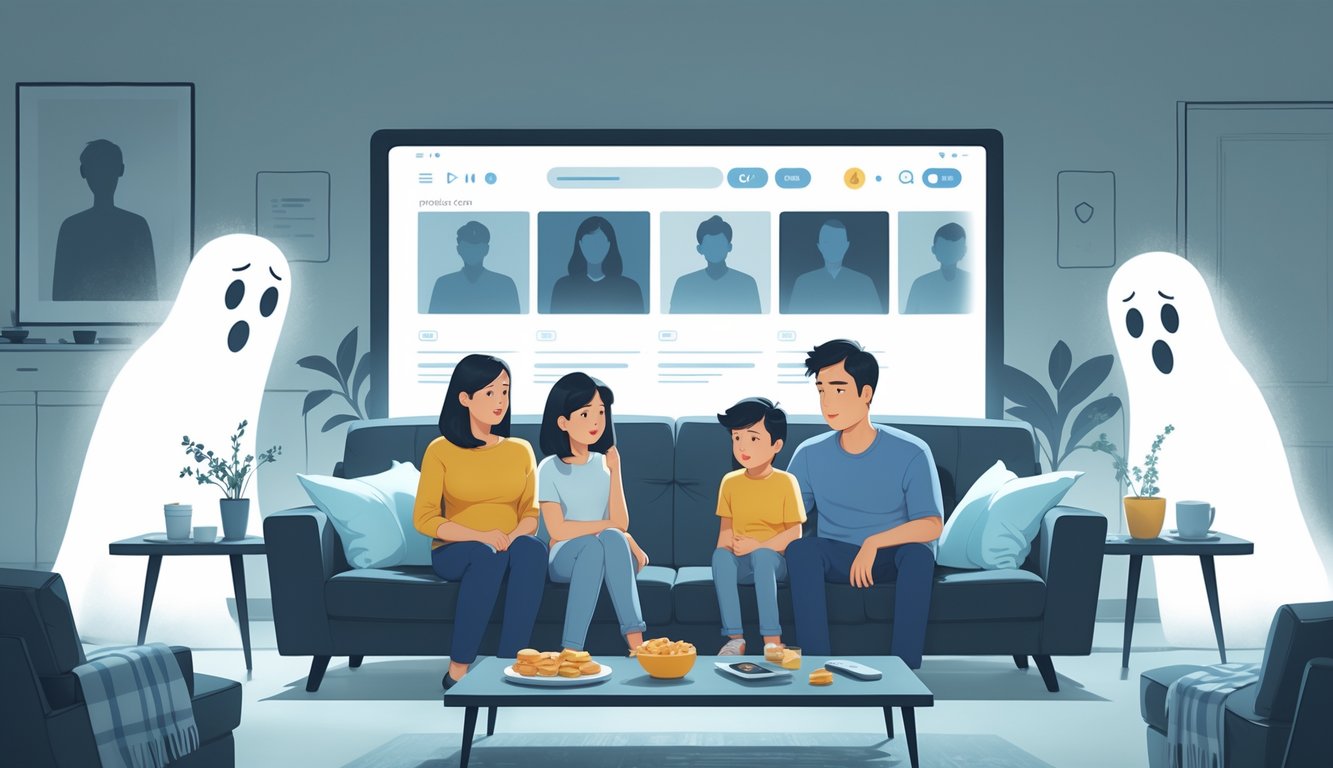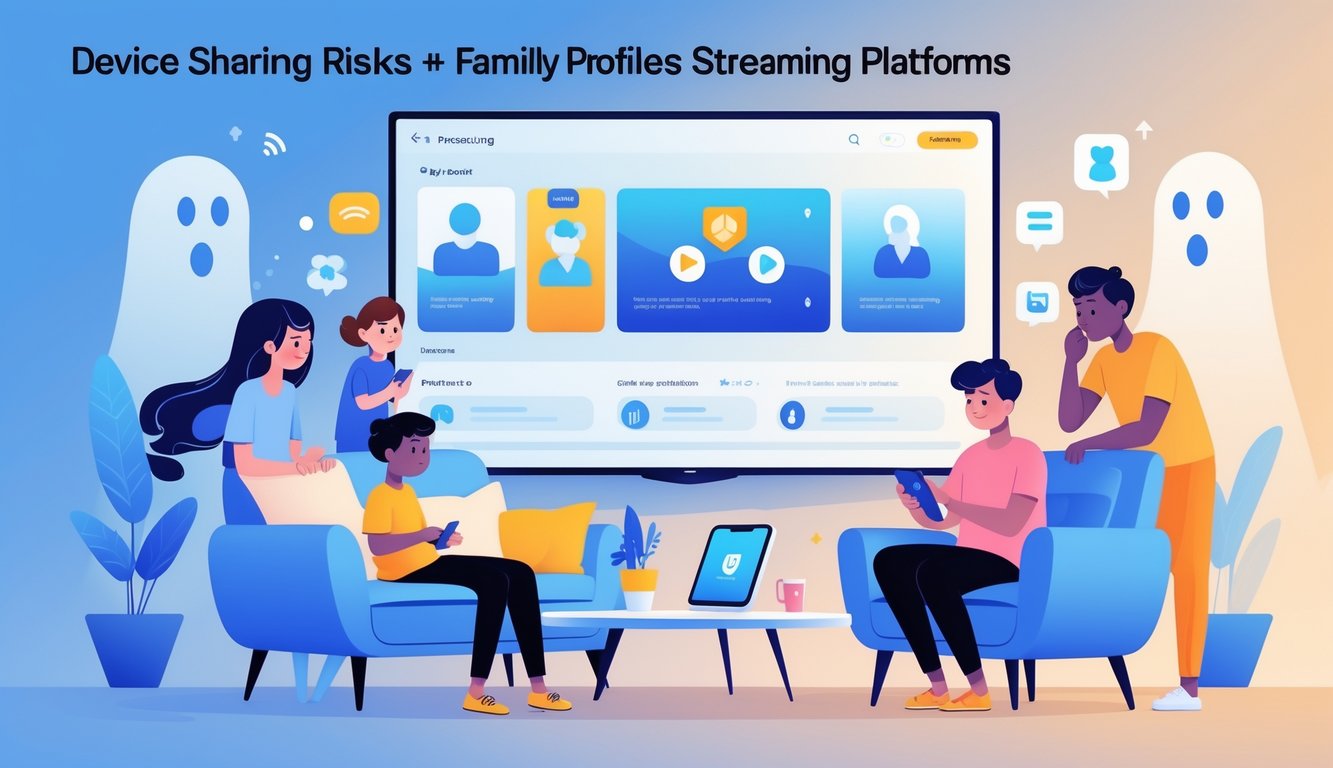
Screen Time and Health Implications
Last Thursday, I caught myself watching “Bluey” credits for the third time in a row. My face actually tingled. Screen time limits? I set them, I swear, but then autoplay just steamrolls right over my rules and, weirdly, profiles make it easier to ignore. We all know it’s not great for us, but honestly, who’s counting?
Eye Strain from Binge-Watching
Three hours into a superhero binge, my eyes are burning and my glasses are smudged beyond repair. Blue light filter? Maybe it works, maybe it’s snake oil. My optometrist mumbled something about the 20-20-20 rule, but does anyone actually remember to do it? Kids are hitting six hours a day on screens now, and nobody’s immune, not even the adults. My nephew, six, glued to his Switch, blinking like a malfunctioning robot—wouldn’t even pause for a snack. APA says emotional burnout and eye strain go hand in hand: you get cranky, then you watch more to numb out, and the cycle just eats itself. Gaming, streaming, whatever—if Minecraft goes past midnight, it’s double the red eyes and a household of zombies the next morning.
Unintended Screen Time Creep
Didn’t I say we’d use profiles for “educational” stuff? Sure. Now everyone’s playlists overlap, autoplay never stops, and no one logs out. I check parental controls, but my daughter finishes “Gravity Falls” and launches into some baking show before I even notice. Screen time keeps creeping up every year, so is anyone really tracking it? Some pediatrician in a newsletter—I forget who—warned that self-regulation just evaporates when the recommendations get hyper-personal. Family profiles? They’re like a loophole for the limits. I get sucked into anime with my teen, suddenly it’s midnight and the “just one more” rule is a joke. Those “Are you still watching?” pop-ups? They’re not fooling anyone.
Device Sharing Risks and Online Safety

Forget easy movie nights—the real mess is all the sneaky ways profiles make security a nightmare. I’m juggling logins between a Fire TV, a kitchen Android TV, and a couple of tablets, and it’s honestly a circus. Privacy controls? Don’t make me laugh.
Account Access Across Multiple Devices
I can’t even count how many streaming sticks and TVs we’ve got now. Each one is just another open door. Anyone with the Netflix password can walk out and set up their own device, and suddenly you’re locked out or, worse, your cousin’s watching on your dime. Sharing devices means you’re also sharing the job of keeping those logins safe, and let’s be real—nobody’s teaching Grandma two-factor authentication. My niece once wiped the entire app history on Google TV because she thought she was just deleting her profile. Not just annoying—kind of a privacy disaster. Location sharing is another headache: suddenly, everyone can mess with everyone else’s stuff. Privacy experts talk about “risk management,” but tell that to me at midnight, rebooting the Fire TV for the third time.
Dangers with Shared Streaming Devices
Why do app settings hide under ten menus? Try explaining that to grandparents. They binge a random miniseries and now my recommended list is all out of whack. Android TV, smart TVs—they don’t bother keeping data separate. Enabling parental controls? Feels like a trap: mess it up and you’re locked out, not the kid. I found a weird charge last month—turns out, my toddler bought a new movie by mashing buttons at breakfast. Too much info slips out, especially when every device logs names, searches, and credit card details. Chromecast “guest mode” exists, but has anyone ever used it on purpose?
Subscription and Cost Efficiency Myths
And the “savings” people love to brag about? Don’t get me started. Family profiles sound like a deal, but half the time it’s smoke and mirrors. The perks get all the hype while the annoying little costs pile up in the background, right next to my unopened jar of capers (why did I buy those?).
False Savings from Shared Profiles
Every promo for family plans is like, “split your streaming, everyone wins!” Except, do we? I’m paying for HD, offline downloads, and extra screens, but my cousin just watches grainy sitcom reruns at work. Family profiles make it feel like you’re getting five accounts for the price of one, but it’s a weird illusion. Psychologist Susan Whitmore calls it “illusory advantage”—the price keeps going up, features get duplicated, and nobody needs all of it. My dermatologist says SPF 30 is fine (random, but true), and yet half my family doesn’t even sign in, but I’m still paying. No one told me I’d be funding four ghost users.
Overlooked Subscription Overlaps
I can’t keep track of how many times I’ve tried to watch something, only to find it’s on three platforms I pay for. Too many family plans, too much content FOMO. At one point, we had Spotify Family and Apple Music Family—same playlists, same monthly charge. A recent breakdown said households spend about $50 a month, but nobody talks about device caps or whose brother-in-law “needs” 4K. Payments tangled, emails ignored, subscriptions stacking up like unmatched socks. I tried a spreadsheet—phone died, gave up. Subscription fatigue is just another chore. Stack enough plans and someone’s adding an extra channel for tennis, but you’ll never know unless you’re an accountant with way too much time.



